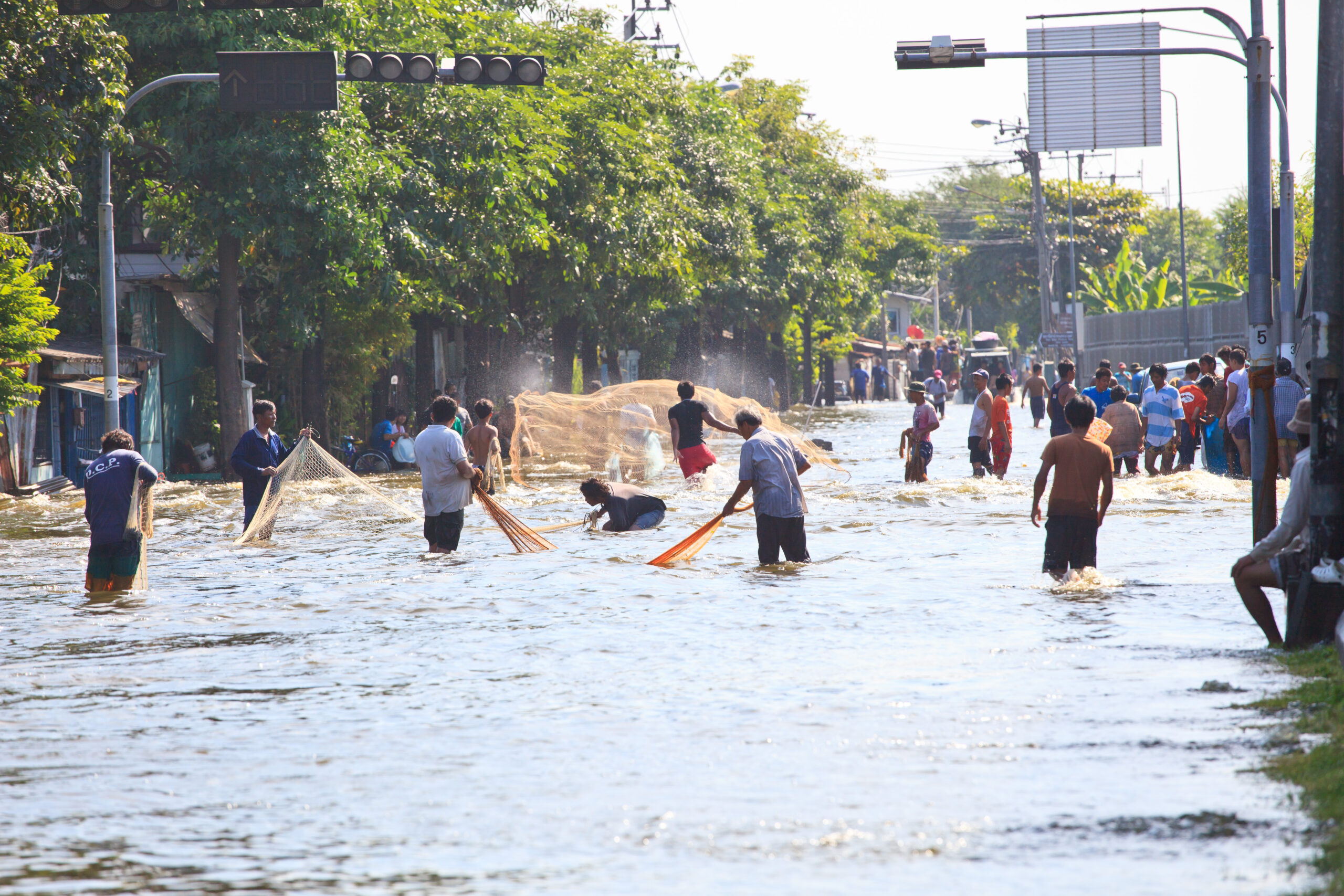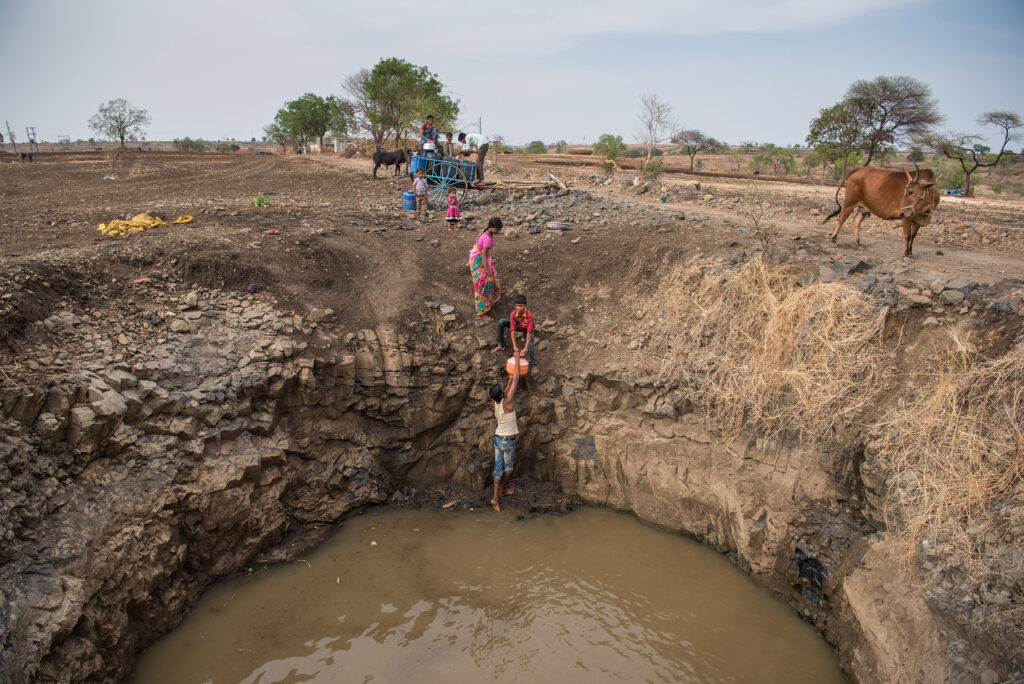Scientists are predicting a more than 50% chance of La Niña arriving in the coming months. The La Niña winter weather forecast predicts cooler and wetter weather, and this could bring welcome relief for the people and communities suffering from extreme heat and drought conditions.
The year 2024 is currently on track to be the Earth’s hottest in thousands of years, replacing 2023 as the current record. Both years saw scorching temperatures and extreme and prolonged heatwaves that impacted millions of people. Attribution science has found that climate change is fuelling these dangerous heatwaves, further supercharged by the El Niño phenomenon that began in June 2023.
This intensified global warming is putting lives at risk and exacerbating existing environmental and humanitarian challenges. For example, Asia’s extreme and record-breaking heat in April and into May 2024 led to severe impacts across the Asian continent, impacting cities and remote communities in Bangladesh, India, Thailand and Vietnam. Extreme heat can have severely harmful effects on human health — particularly affecting vulnerable groups, including the elderly, young people and outdoor workers. “From Gaza to Delhi to Manila, people suffered and died when April temperatures soared in Asia,” said Dr. Friederike Otto from Imperial College London, part of the World Weather Attribution (WWA) study team. “Heatwaves have always happened. But the additional heat, driven by emissions from oil, gas, and coal, is resulting in death for many people.”
The Shift to La Niña in 2024-2025
The latest data predicts a shift from the current El Niño phase to La Niña conditions, with a more than 50% chance of La Niña developing by December 2024 through February 2025. La Niña is generally associated with cooler ocean temperatures and different weather patterns, which may bring both relief and new challenges to many regions in Asia. This shift will likely result in wetter and cooler conditions compared to El Niño’s heatwaves.
Scientists explain that these new conditions are likely temporary, and will not counteract the overall trend of extreme and intensifying planetary-scale heating. The past 10 years have been the warmest on record, ocean heat is rising, and extreme weather and climate events have led to massive economic and human losses. “Even if a La Niña event does emerge, its short-term cooling impact will be insufficient to counterbalance the warming effect of record heat-trapping greenhouse gases in the atmosphere,” World Meteorological Organisation (WMO) Secretary-General Celeste Saulo said.
The La Niña winter weather forecast is also tied to its significant weather disruptions for regions in Asia, including typhoons and flooding. Moreover, rising temperatures caused by climate change mean periods of La Niña can remain as hot as historical periods of El Nino. It is this additional heat in air and water that is supercharging certain weather disasters such as Super Typhoon Yagi — Asia’s most powerful storm of 2024, which hit multiple countries in Southeast Asia in early September. Research shows that storms and typhoons are becoming more intense due to human-driven climate change. Analysing the conditions surrounding Yagi, scientists at ClimaMeter found that tropical depressions near Vietnam are now up to 20% wetter and 5% windier than in previous decades due to climatic changes.
Predicting La Niña and Its Impacts
Meteorological experts caution that La Niña often brings significant rainfall and unexpected drops in temperature. According to the WMO, extreme weather is becoming the “new normal,” with natural disasters occurring more frequently. Asia is now bracing for the heavy rains, tropical storms and other disasters commonly associated with La Niña.
While La Niña’s effects are regional and depend on local conditions, analysing past trends can help predict the potential outcomes. Data models such as this are vital to provide governments, NGOs and other organisations with informed predictions, enabling proactive disaster planning and response. These models are life-saving, helping to mitigate the impact of extreme weather events on lives, livelihoods and critical infrastructure.
However, the interplay between La Niña and ongoing climate change adds another layer of complexity. Climate change is significantly altering weather patterns, making them less predictable and more extreme. Record-breaking sea surface temperatures further complicate predictions.

La Niña Winter Weather Forecast: Outlook For Asia
With expected cooler and wetter conditions on the way, La Niña may bring relief from the impacts of recent heat and drought extremes. For example, increased rainfall and cooler conditions could positively impact grain yields in China, alongside increased rice production in India and Indonesia — aiding farmers recovering from recent droughts. The additional rainfall can also replenish reservoirs, lakes and groundwater, and cooler temperatures can mitigate heat stress, improving health for both people and livestock. Wetter conditions may also support hydropower generation, thereby supporting regional energy security.
Yet, forecasters are also warning of regional risks and potential impacts from this expected rain. Southeast Asia is expected to face heightened rainfall and monsoons during La Niña, raising alarms for countries like Indonesia, Vietnam, the Philippines and India. With climate change amplifying these intense rainfall events, people and communities are facing a higher risk of dangerous flash floods and landslides.
For example, severe flooding caused by intense monsoon rains recently impacted millions of people across India, Bangladesh and Pakistan, with some regions experiencing the worst flooding in decades. Alongside losses of life and impacts to healthcare services, the floods severely damaged roads, farmlands and fisheries, impacting livelihoods and food security, particularly for smallholder farmers. Additionally, flooding can contaminate vital water sources, increasing outbreaks of illness and diseases. WWA scientists have also linked the September floods that killed hundreds of people in Nepal to human-driven climate change. The rainfall was about 10% more intense and 70% more likely in our climate, which is 1.3°C warmer than pre-industrial levels.
Planning for a Dangerous, Uncertain Future
With a hotter, wetter, stormier and less predictable future ahead, governments, NGOs and local communities must work together to build resilience against uncertain and volatile weather patterns. The Intergovernmental Panel on Climate Change (IPCC) highlights that climate-related disasters and extreme weather events are worsening more quickly than scientists originally predicted. Communities worldwide are already suffering from a cascade of damage to livelihoods, food and water security, infrastructure and essential services. Meanwhile, funding for adaptation and community resilience has not kept pace with these new dangers, meaning communities cannot recover from one disaster to the next.
“The record-breaking rainfall and flooding, rapidly intensifying tropical cyclones, deadly heat, relentless drought and raging wildfires that we have seen in different parts of the world this year are unfortunately our new reality and a foretaste of our future,” said the WMO’s Saulo. “We urgently need to reduce greenhouse gas emissions and strengthen our monitoring and understanding of our changing climate. We need to step up support for climate change adaptation through climate information services and Early Warnings for All,” she said.
Evelyn Smail
Writer, United Kingdom
Evelyn is a freelance writer and journalist specialising in climate science and policy, the just energy transition and the human impacts of climate change. She writes for independent publications, NGOs and environmental organisations. Evelyn has a background in sustainable development, climate justice and human rights.
Evelyn is a freelance writer and journalist specialising in climate science and policy, the just energy transition and the human impacts of climate change. She writes for independent publications, NGOs and environmental organisations. Evelyn has a background in sustainable development, climate justice and human rights.














